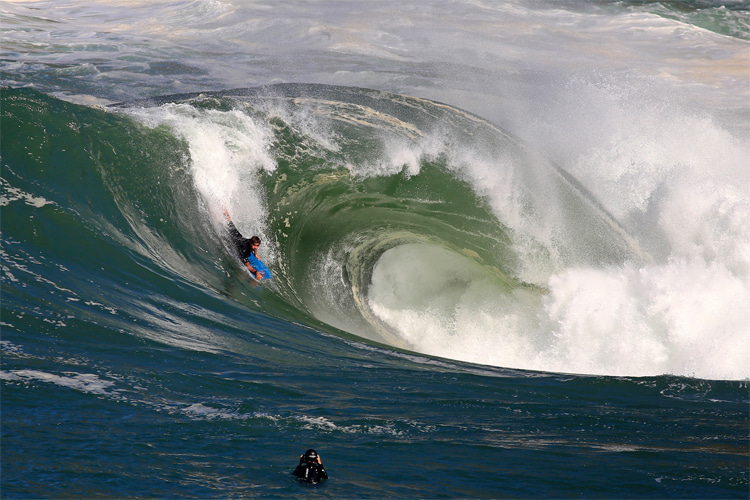It's ultra dangerous, fickle, unpredictable, and rarely breaks. Welcome to Laje do Shock, one of Brazil's heaviest slab waves.
Niterói is a city located west of Rio de Janeiro that is home to several iconic wave-riding spots.
One of them is Itacoatiara Beach, a bodyboarding world tour venue for decades known for its powerful beach break waves.
Laje do Shock - meaning Shock Slab - can be found in the vicinity, hidden between coastal rock formations, rising fast from the surface of the water like a mutant ghost.
Slab waves are known for their temperamental nature, and this Brazilian horror show is no different.
If you're not scared or experience fear at Shock, you should visit a doctor or psychiatrist.
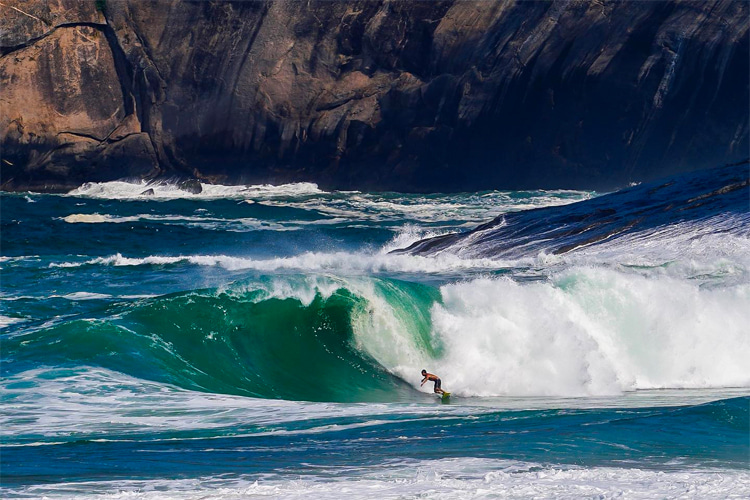
Pioneered by Bodyboarders
Make no mistake: in this place, an average-sized wave will easily toss you onto massive rocky structures like a ragdoll.
So, the trick for this Brazilian slab wave is to study, analyze, observe, and dissect it from the outside before even trying it.
Bodyboarders were the first to adventure themselves in Niterói's Shock slab, with Rodrigo and Guilherme Corrêa, Dudu Pedra, and José Otávio among the spot's first group of explorers.
They were the black belt pioneers of this stunning arena, followed by stand-up surfers Bruno Santos and Guilherme Herdy.
In the 2010s, a group of riders created the Shock Master Challenge, an invitation-only extreme bodyboarding event held during XXL swells.
There is also Itacoatiara Big Wave's Wave of the Winter Awards, a tow-in and paddle competition highlighting the season's best wave riders and photographers/videographers.
Tony D'Andrea, a former world tour lensman from Niterói, is one of the regular faces in the lineup and one of Shock's most experienced cameramen.
Shock is a special photogenic wave for local riders and those who survive it. A one-second barrel at this place will remain in your memory forever.
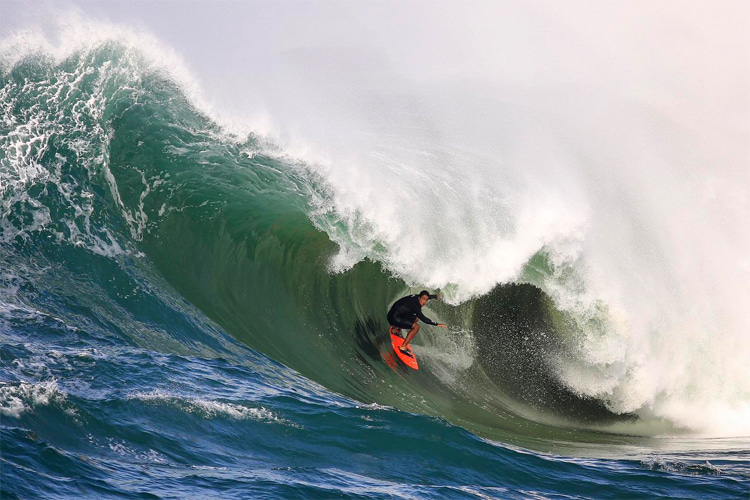
A Shocking X-Ray
Shock is one of the most potent and challenging waves in Brazil. It resembles Sydney's Cape Fear/Ours and Tasmania's Shipstern Bluff.
Its sensitive nature results from a rock bottom and powerful swells that reach the small bay where it breaks.
The right-hand slab wave roars to life west of Itacoatiara Beach, near Pampo Rock.
The area is perfectly aligned to receive high-energy swells traveling from a south or southwest direction.
These swells are mainly generated by storms born in the low latitudes of the Southern Hemisphere during autumn and winter.
On special days, Shock welcomes riders with cold water and mild air temperatures.
Waves formed thousands of kilometers meters away from the coast steadily harness energy until they meet Shock's shallow rock bottom.
When these miracle moments occur, swells suddenly morph into huge waves that sometimes exceed 22 feet (7 meters).
As waves rise, they also transform into giant and forceful barrels.
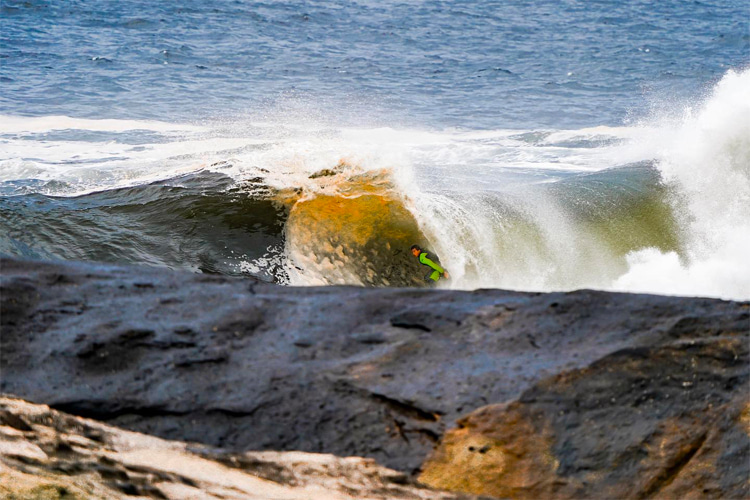
Depth: One Meter
Shock's most striking characteristics are the sudden changes in the wave's shape due to the bottom contour and backwash.
The depth of the reef break is three feet (one meter). And to ride a surfboard here, only with the help of a jet ski.
Surfers are towed into the massive liquid beast and must find a way to maintain balance to avoid being caught by a backwash wave.
It's a perilous challenge, and on top of it, while positioning themselves inside the tube, they are never comfortable, as the wave often closes out abruptly.
Also, when they fall or wipe out, wave riders are seldom pushed underwater in front of the nearby rock formation for quite a while.
The Brazilian wave has a small and narrow channel surrounded by tricky currents. But it's also an excellent place to shoot the riders and learn more about this spot.
However, conditions on a southeast swell get wild and treacherous, with waves breaking onto the slab and the exposed rocks.
Last but not least, the access to the infamous peak.
Daredevils are invited to put on a helmet and enter the water by sliding down the rounded Pampo Rock overlooking the take-off zone.
You've got to choose the right moment and go - with no hesitations.
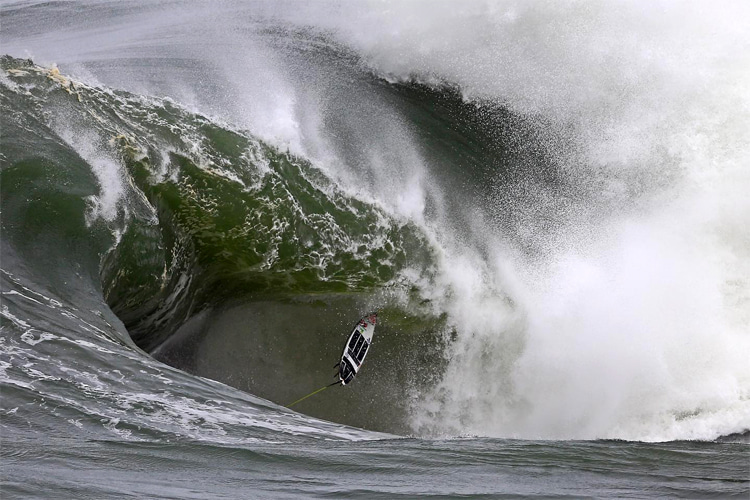
Tricky to Ride
Dudu Pedra is one of the most experienced riders at Shock.
He knows how your top skills might not be enough for this moving monster.
"Shock is a hazardous wave in all conditions. From the moment you see the swell arriving and start paddling, there is already a side wash section trying to take you down," explains Pedra.
"Then, you must speed up to overcome a more squared section. This drop zone is the shallowest area of the slab.
"After getting past these two challenges at full speed through the barrel, there's still a backwash coming from the bay that you have to tackle."
"Shock is more of a challenging wave than a good wave. But if you can ride it to the end, it can be highly satisfying."
Shock is a unique slab wave. It challenges fear and - above everything else - it challenges the always subtle border between life and death.
